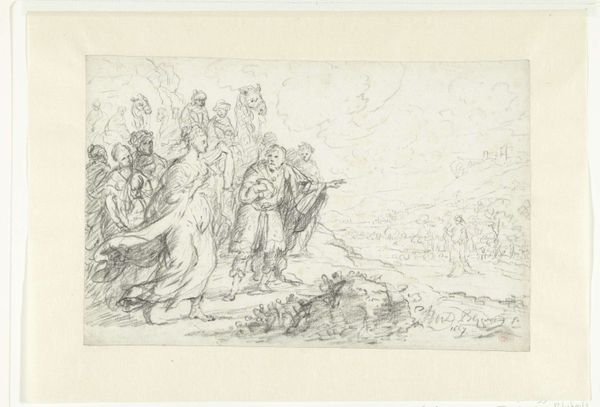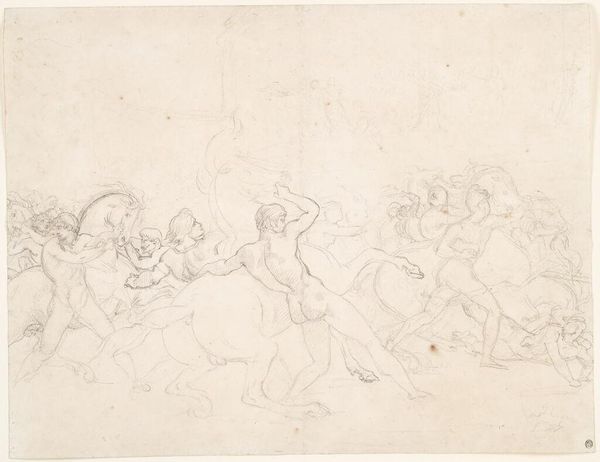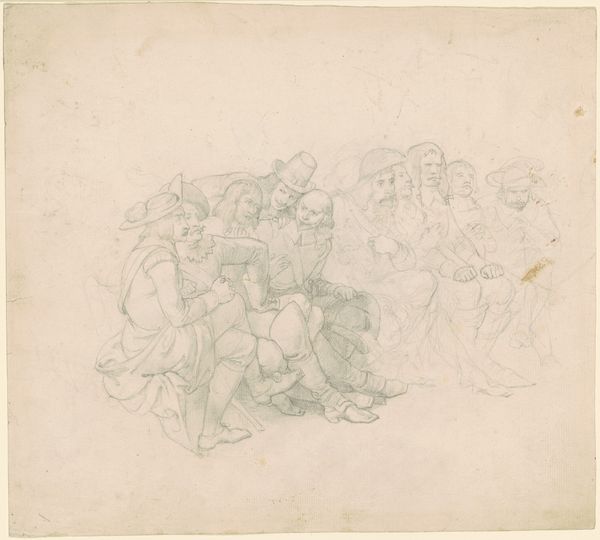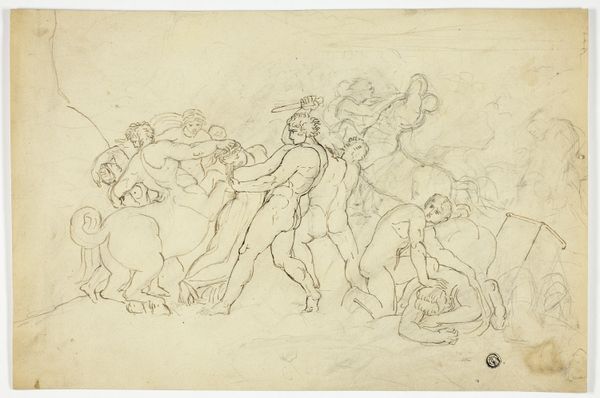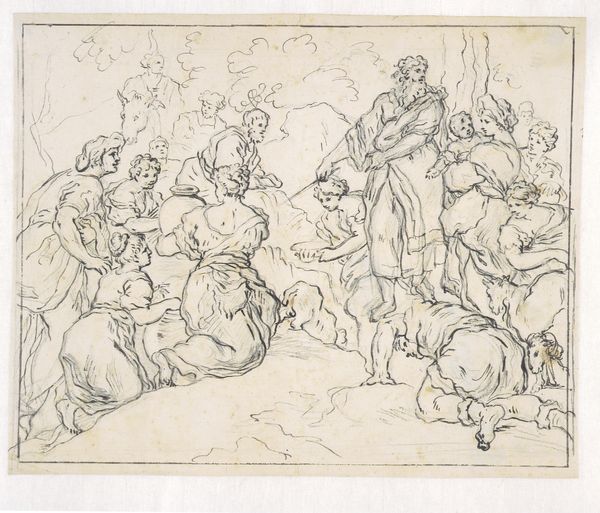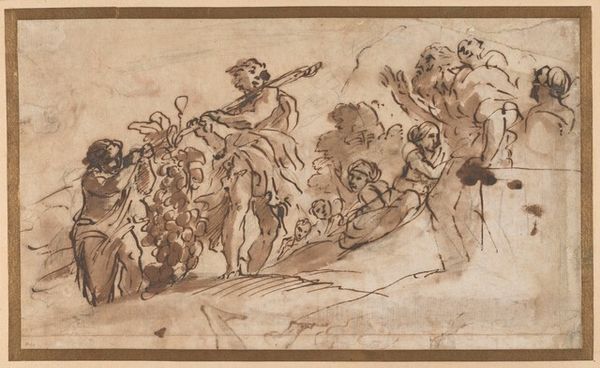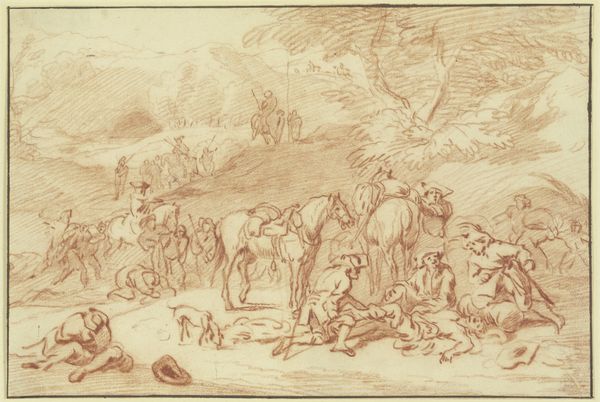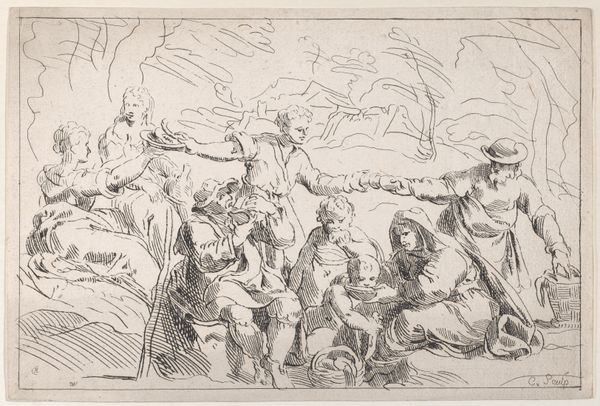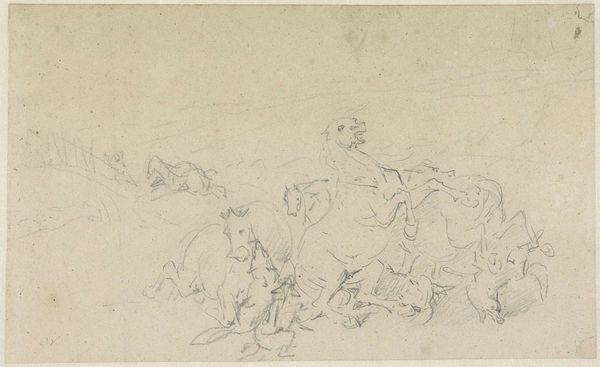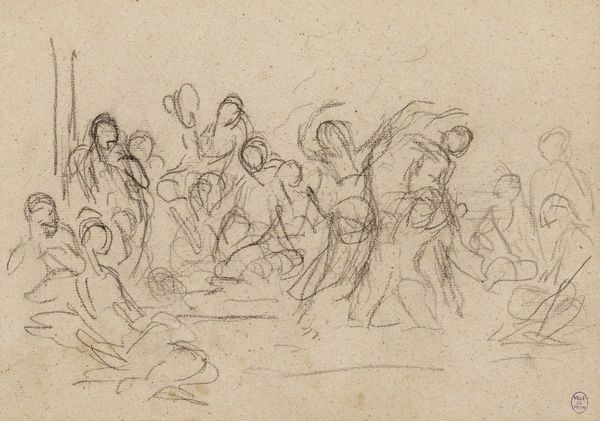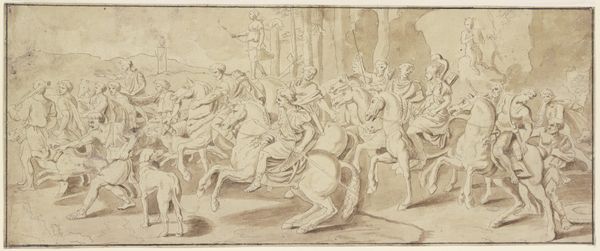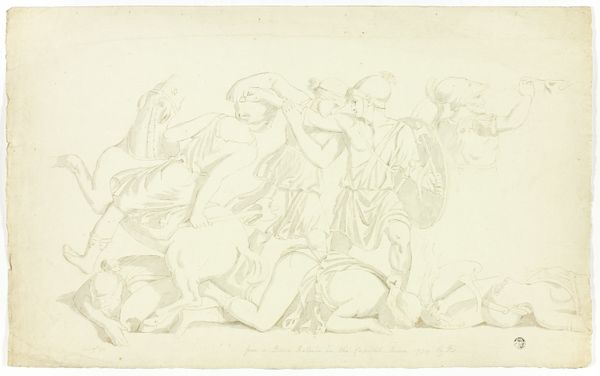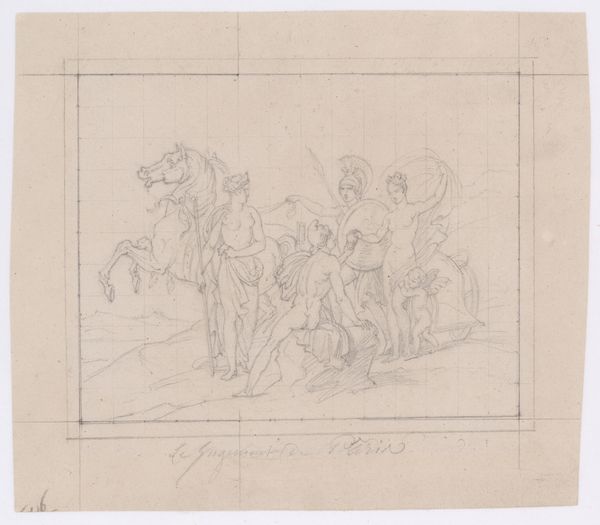
Oorlogstafereel in Spanje: een gekwetst paard wordt met een pistoolschot afgemaakt 1799 - 1863
0:00
0:00
drawing, pencil
#
drawing
#
pencil sketch
#
landscape
#
figuration
#
romanticism
#
pencil
#
genre-painting
#
history-painting
Dimensions: height 200 mm, width 280 mm
Copyright: Rijks Museum: Open Domain
Editor: This pencil sketch, "Oorlogstafereel in Spanje: een gekwetst paard wordt met een pistoolschot afgemaakt", or "War Scene in Spain: a wounded horse is finished off with a pistol shot," is by Horace Vernet, created sometime between 1799 and 1863. There’s a raw, brutal energy in this depiction of war's impact on animals. What can you tell me about this work from a material perspective? Curator: Considering the use of pencil, we can see the immediacy and the possible economic constraints under which Vernet was working. This isn't a grand oil painting destined for a palace. It’s a sketch, perhaps preparatory, perhaps a work in its own right, speaking to a more accessible art market and possibly to a different kind of patron. Editor: That's interesting. I hadn't considered the accessibility of pencil versus oils. Curator: Absolutely. And the subject matter – the grim reality of war rendered through the mundane labor of the artist's hand – challenges any romantic idealization. Vernet wasn’t crafting propaganda; he was participating in a visual discourse concerning the social and material consequences of conflict. Editor: So you're saying the material itself helps shape the message and reflects the artist’s interaction with his own social landscape? The disposability of the sketch mirrors the expendability of life depicted? Curator: Precisely. We could also analyze how the supply chain of pencils - the mining of graphite, the processing of wood - connects this image to broader global systems of resource extraction and consumption in the 19th century. Were these materials locally sourced, or did their provenance connect to colonial supply routes, mirroring the Spanish campaigns? These choices influenced the very making, the very appearance of the artwork. Editor: I never would have considered the supply chain behind a pencil. That’s given me a lot to think about! Thanks for highlighting the significance of the materials. Curator: It's essential to examine the physicality of art – not just what it depicts, but how its production connects it to the world.
Comments
No comments
Be the first to comment and join the conversation on the ultimate creative platform.
